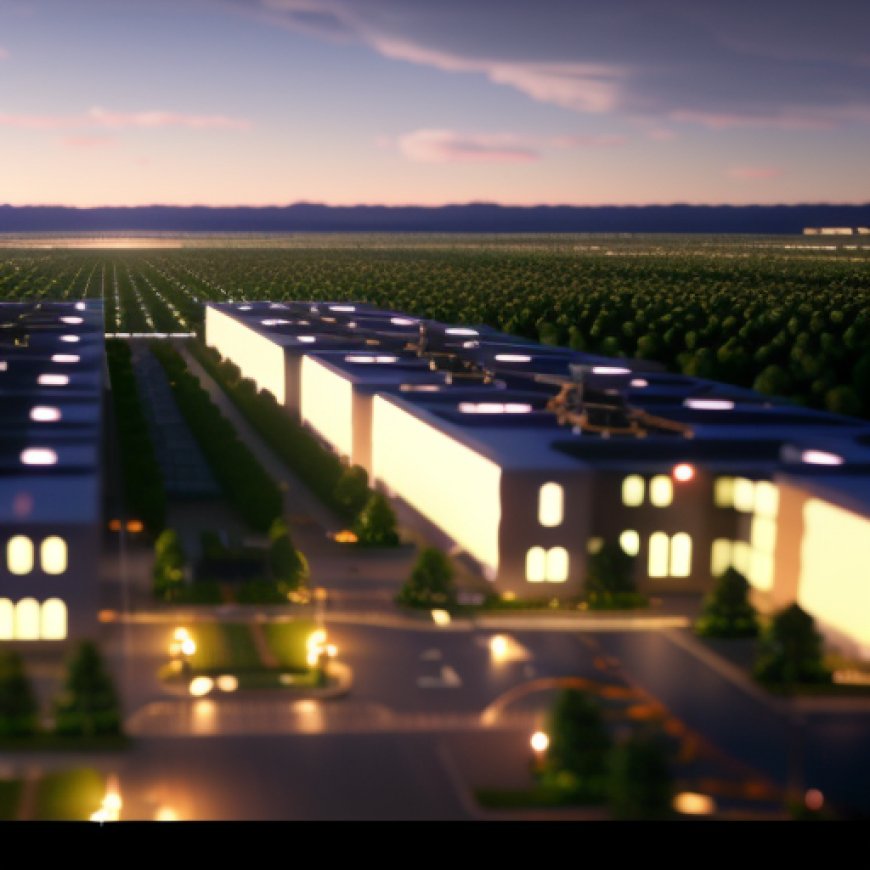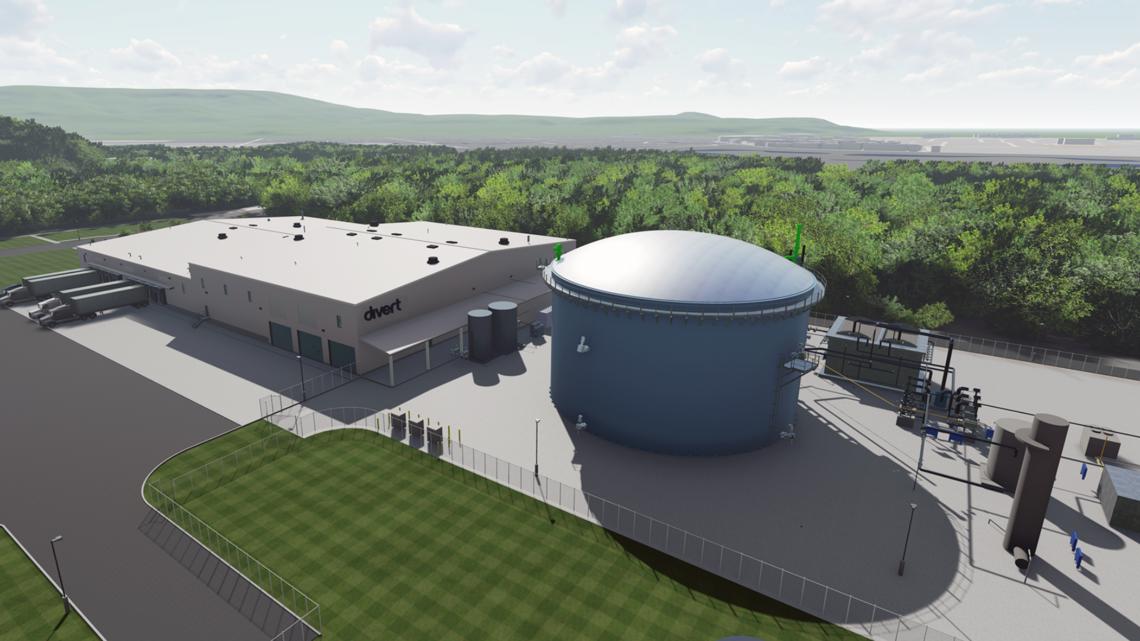New Longview facility hopes to keep 100,000 tons of food waste from going into landfills every year
New Longview facility hopes to keep 100,000 tons of food waste from going into landfills every year KGW.com


Innovative Food Waste Processing Facility Breaks Ground in Washington

In Oregon and Washington, more than 3.5 million tons of food gets wasted every year. Divert, the company behind the facility, is hoping to ease that problem.
Introduction
On Thursday, state and local officials gathered in Longview, Washington to celebrate the groundbreaking of a new food waste processing facility. The facility, built and operated by Divert, will cover 66,000 square feet of warehouse space in the city’s Mint Farm Industrial Park and has the capacity to process up to 100,000 tons of food waste annually.
Preventing Food Waste
Divert distinguishes itself from other food waste management companies by prioritizing prevention rather than simply diverting waste from landfills. Chris Thomas, Vice President of Public Affairs with Divert, emphasizes the importance of focusing on prevention as the first step in the process. The company plans to work closely with its customers to collect data on the types of food being sent to Divert, enabling them to identify trends and provide recommendations for reducing waste.
Maximizing Food Resources
Divert recognizes the value of food resources and aims to minimize waste by finding alternative uses for food that doesn’t meet the standards of grocery stores, hotels, and convention organizers. Instead of considering this food as waste, Divert will identify items that are still good and redirect them to local food banks, ensuring their valuable resources are utilized effectively.
Sustainable Development Goals (SDGs)
Divert’s approach aligns with the Sustainable Development Goals (SDGs) set by the United Nations. By focusing on preventing food waste and maximizing resource utilization, Divert contributes to several SDGs, including:
- SDG 2: Zero Hunger
- SDG 12: Responsible Consumption and Production
- SDG 13: Climate Action
Anaerobic Digestion Process
The new facility will utilize anaerobic digestion to harness the methane produced from decomposing food waste. The process involves de-packaging the waste, removing plastics and contaminants, and converting it into a liquid slurry. Over a few weeks, this slurry generates biogas, which is then purified to meet the specifications of utility-scale natural gas. By utilizing renewable biogas instead of extracting methane through processes like fracking, Divert eliminates health concerns and reduces its impact on climate change.
Compliance with Organic Material Disposal Laws
The facility also helps Washington comply with House Bill 1799, known as the Organics Management Law. This law requires organic material to be diverted from landfills, with a goal of reducing organic material in landfills by 75% by 2030 compared to 2015 levels. Even in states without organic material disposal laws, Divert’s customers still benefit from choosing their services, as it can be cost-effective and lead to better business decisions.
Conclusion
Construction is already underway, and Divert expects the facility to be fully operational by the end of 2024. By prioritizing prevention, maximizing resource utilization, and aligning with the SDGs, Divert’s innovative food waste processing facility in Washington sets a positive example for sustainable waste management practices.
SDGs, Targets, and Indicators
-
SDG 2: Zero Hunger
- Target 2.1: By 2030, end hunger and ensure access by all people, in particular the poor and people in vulnerable situations, including infants, to safe, nutritious, and sufficient food all year round.
- Target 2.3: By 2030, double the agricultural productivity and incomes of small-scale food producers, in particular women, indigenous peoples, family farmers, pastoralists, and fishers, including through secure and equal access to land, other productive resources and inputs, knowledge, financial services, markets, and opportunities for value addition and non-farm employment.
The article addresses the issue of food waste and the need to prevent it. By preventing food waste, more food can be made available for consumption, contributing to the goal of ending hunger (SDG 2). The targets under SDG 2 that can be identified are Target 2.1, which aims to ensure access to safe and nutritious food all year round, and Target 2.3, which aims to increase the productivity and incomes of small-scale food producers.
-
SDG 12: Responsible Consumption and Production
- Target 12.3: By 2030, halve per capita global food waste at the retail and consumer levels and reduce food losses along production and supply chains, including post-harvest losses.
- Target 12.5: By 2030, substantially reduce waste generation through prevention, reduction, recycling, and reuse.
The article highlights the importance of preventing food waste and diverting organic material from landfills. These actions align with the targets under SDG 12. Target 12.3 specifically focuses on reducing food waste along production and supply chains, while Target 12.5 aims to reduce waste generation through prevention and recycling.
-
SDG 13: Climate Action
- Target 13.2: Integrate climate change measures into national policies, strategies, and planning.
The article mentions that food waste in landfills produces methane, a potent greenhouse gas that contributes to climate change. By diverting food waste from landfills and utilizing anaerobic digestion to harness methane, the facility contributes to climate action (SDG 13). The specific target identified is Target 13.2, which emphasizes the integration of climate change measures into national policies and planning.
Table: SDGs, Targets, and Indicators
| SDGs | Targets | Indicators |
|---|---|---|
| SDG 2: Zero Hunger | Target 2.1: By 2030, end hunger and ensure access by all people, in particular the poor and people in vulnerable situations, including infants, to safe, nutritious, and sufficient food all year round. | N/A |
| SDG 2: Zero Hunger | Target 2.3: By 2030, double the agricultural productivity and incomes of small-scale food producers, in particular women, indigenous peoples, family farmers, pastoralists, and fishers, including through secure and equal access to land, other productive resources and inputs, knowledge, financial services, markets, and opportunities for value addition and non-farm employment. | N/A |
| SDG 12: Responsible Consumption and Production | Target 12.3: By 2030, halve per capita global food waste at the retail and consumer levels and reduce food losses along production and supply chains, including post-harvest losses. | N/A |
| SDG 12: Responsible Consumption and Production | Target 12.5: By 2030, substantially reduce waste generation through prevention, reduction, recycling, and reuse. | N/A |
| SDG 13: Climate Action | Target 13.2: Integrate climate change measures into national policies, strategies, and planning. | N/A |
Behold! This splendid article springs forth from the wellspring of knowledge, shaped by a wondrous proprietary AI technology that delved into a vast ocean of data, illuminating the path towards the Sustainable Development Goals. Remember that all rights are reserved by SDG Investors LLC, empowering us to champion progress together.
Source: kgw.com

Join us, as fellow seekers of change, on a transformative journey at https://sdgtalks.ai/welcome, where you can become a member and actively contribute to shaping a brighter future.







